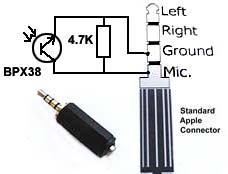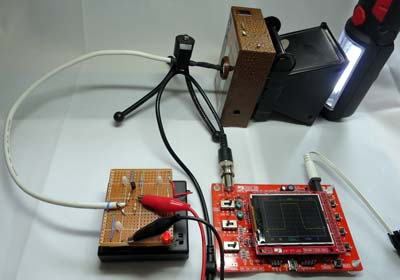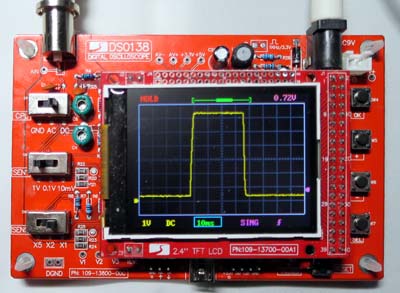Finding the shutter speed of a vintage film camera
Why test a camera's shutter speed?
It is sometimes difficult to find the documented shutter speed of a particular vintage film camera. On the internet, many commentators simply guess the value. Even when the camera shows nominal values of the shutter speed, the actual shutter speed can be wildly different. As a camera ages, the shutter speed may change.
However, if you want to use vintage cameras successfully with modern film, you will need to know the shutter speed with reasonable accuracy.
Shutter speed issues
Here are two examples of why it will be important to check a camera's shutter speed.
Shutter speed not constant
Cameras with a flip-flop action where the shutter is moved in one direction for one shot and the other direction for the next shot, the speed might not be the same. Also, the speed might be different if you press the shutter quickly or slowly. For example, my Beau Brownie has a shutter speed of 1/50s if the shutter is pressed normally, but if you press the shutter slowly to avoid camera shake, the speed reduces to 1/25s. This is a 1 stop difference!
Shutter speed is not equal to the nominal value as indicated on the camera
As an example, the table below shows the nominal speed versus the actual speed of my Kodak Retina 126. The correction required in stops is also shown.
| Nominal | 1 | 1/2 | 1/5 | 1/10 | 1/25 | 1/50 | 1/100 | 1/250 | 1/500 |
|---|---|---|---|---|---|---|---|---|---|
| Actual | 1/1.1 | 1/2.3 | 1/4.4 | 1/43.1 | 1/23.7 | 1/52 | 1/100 | 1/221 | 1/306 |
| Correction | 0 | +1/3 | -1/3 | +2 | -0 | +0 | +0 | -1/3 | -2/3 |
This information allows for the compensation of the aperture value or the avoidance of some shutter speeds altogether - for example 1/10 above.
Measurement Methods
The following methods of shutter speed measurement are only applicable to film cameras.Shutter-Speed App
 "Shutter-Speed" is an App which allows you to measure the shutter speeds of your cameras simply with your smartphone. There is no need for a PC or bulky equipment. The App is available for both iOS and android-devices. There are two ways of using the App, either with or without the Photoplug hardware. When you use the app without the extra hardware, it monitors the sound that the camera makes. Analysis of this sound enables you to estimate the shutter speed. This is not particularly useful.
"Shutter-Speed" is an App which allows you to measure the shutter speeds of your cameras simply with your smartphone. There is no need for a PC or bulky equipment. The App is available for both iOS and android-devices. There are two ways of using the App, either with or without the Photoplug hardware. When you use the app without the extra hardware, it monitors the sound that the camera makes. Analysis of this sound enables you to estimate the shutter speed. This is not particularly useful.  It's much better with the hardware because the photoplug, that plugs into the microphone input, converts the flash of light from the shutter into electrical signals which are then viewed in the app. With this app you can easily measure shutter speeds up to 1/500s and beyond.
It's much better with the hardware because the photoplug, that plugs into the microphone input, converts the flash of light from the shutter into electrical signals which are then viewed in the app. With this app you can easily measure shutter speeds up to 1/500s and beyond.
I have used this very successfully with my iPad 5 but it failed on my iPhone 5. I suspect a problem with my iPhone because other people have not had a problem with the iPhone.
You can make the Photoplug yourself. A circuit is shown here. This circuit is for ios devices. For android, the Ground and Mic connections on the plug are reversed. The emitter of the opto-transistor should always be connected to Ground. The components are inside the plug with the opto-transistor sticking out the end. The maximum power in the resistor (VxV/R) (5x5/4.7k) is about 5mW so a 0.25W resistor is OK.
The challenge of making this plug is mechanical and not electrical. Getting the components soldered and squeezed into the plug is a problem. I suggest you use the smallest physical size of resistor you can find. Remember, you don't need the cover on the plug but it looks nicer and it is more durable.
Check out this App and hardware here:- http://www.photoplug.de/
Digital Storage Oscilloscope
A simple circuit can be constructed so that the signal from an opto-transistor can be viewed on a digital storage oscilloscope. This is not an expensive option if you use the DSO138 oscilloscope that can be sourced for less than £15.
The circuit I use is built on strip board and mounted on a battery pack containing 4 AA batteries. It uses a BPX38 opto-transistor to generate the signal and a 2N3906 PNP transistor to amplify the signal. The battery pack has an integral switch and I use an LED as a power indicator.


The technique used to measure the shutter speed will depend on the shutter type. For simple shutters, where the shutter is close to the lens, it is best to place the opto-transitor detector in front of the lens and a light source close to the film plane - as shown below. This gives the strongest signal. It's best to use a bright LED light although other types of light are OK. However, mains driven incandescent lamps should not be used because they will cause a 100Hz noise signal.
If you have a focal plane shutter, then the light should be placed in front of the lens and the signal detected close to the film plane. You need quite a bright light for this. You can check the focal lens shutter at the centre of the focal plane and at each side to ascertain whether the two curtains are travelling at the correct speeds.
It should be noted that an incandescent battery powered light source should be used. Some LED sources are OK but others have a pulsed output which is OK for slow shutter speeds but will give errors for higher shutter speeds.


Read the width of the pulse (t) at its centre to calculate the shutter speed. If you want the shutter speed to be in the form 1/T then T=1/t. In the above test, the pulse width was 33ms. Therefore T = 1/33ms= 1/0.033 = 30. So the shutter speed can be written as 1/30s.